
4-Xtremes – Part 33: At the scene of the nuclear disaster – an expedition through Chernobyl
Series: 4-Xtremes – The World Tour
Chernobyl made world history. 35 years later, you can now visit the site of the nuclear disaster – under strict safety regulations. Andrea and Mike dared to go there.
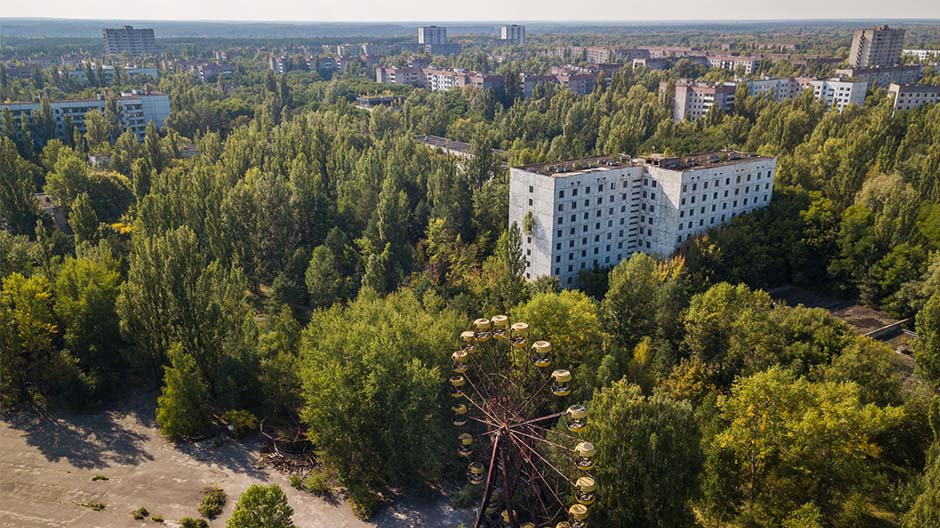
When no big wheel turns: in Prypyat the man-made world has been at a standstill since the reactor catastrophe in 1986.
Since the moment the Ukraine landed on our route plan, one thing has been certain: we will visit Chernobyl. Following the nuclear disaster on 26 April 1986, the authorities of the former Soviet Union declared a 30-kilometre radius around the damaged reactor block 4 a prohibited area. More than 160 villages and towns were evacuated or razed to the ground. Today the abandoned town of Prypyat is known the world over as the embodiment of a "lost place".
If you want to visit the zone, you must book a guided tour. We find a hostel whose owners will look after Aimée for a day. Our tour guide, Julia, is waiting for us at a checkpoint. Our passports and the drone are inspected, then we are given dosimeters to measure radiation – and ordered to keep them on us at all times. And then the barrier is raised for us and the Axor.
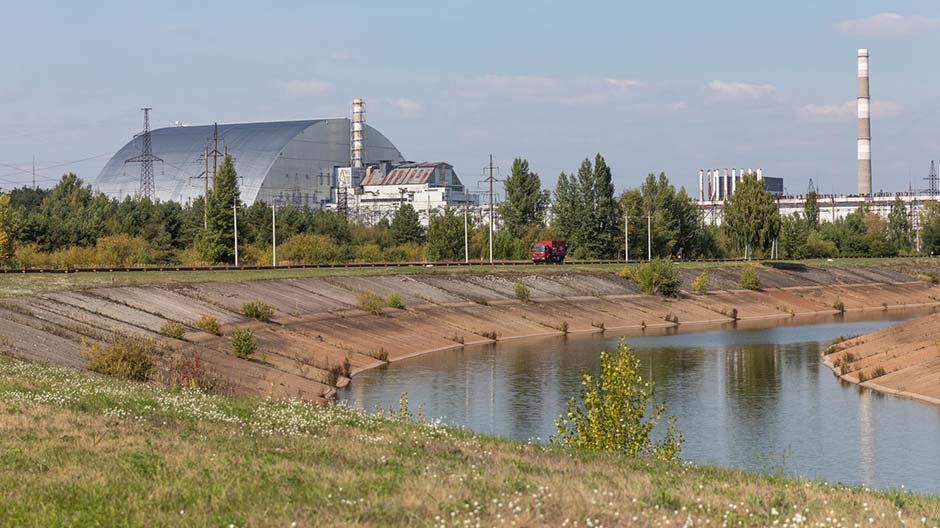
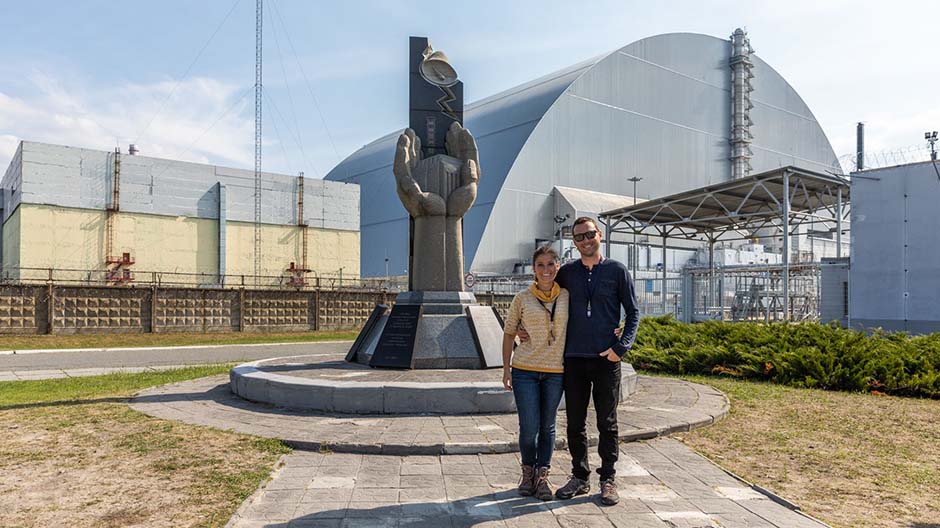
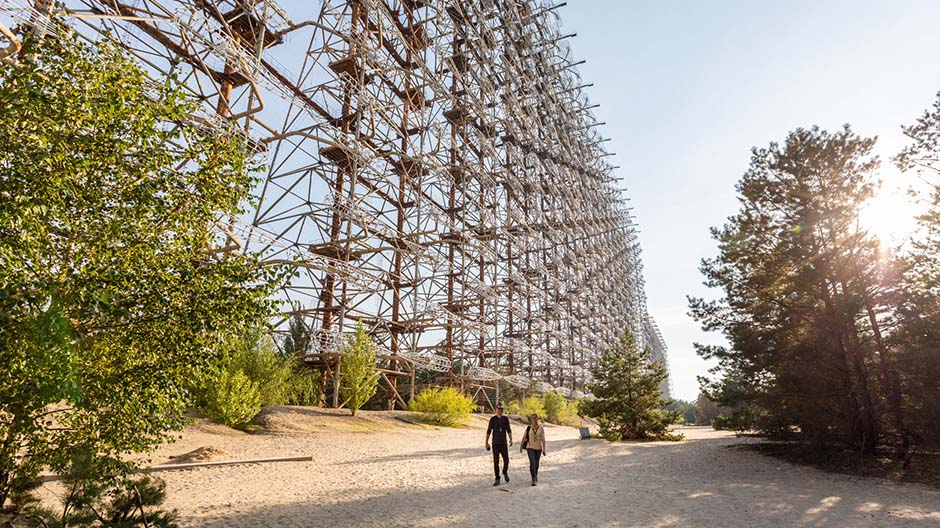
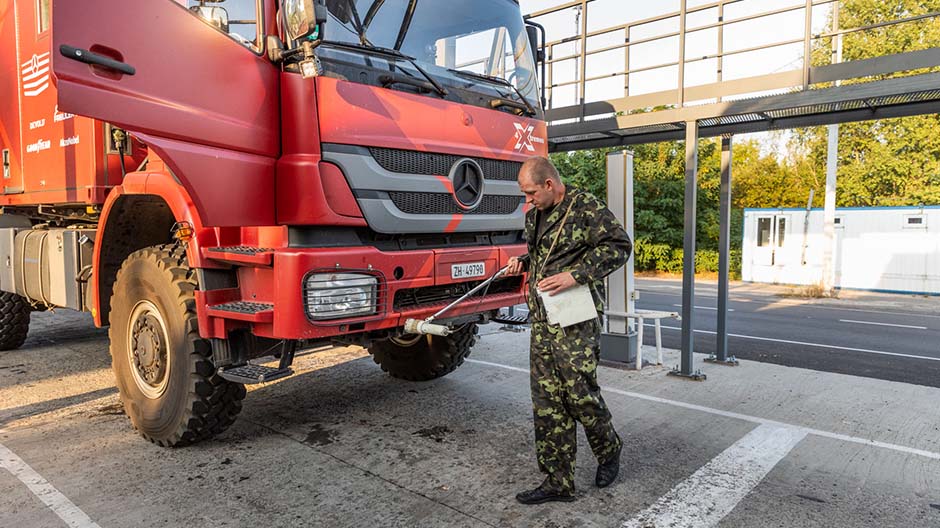
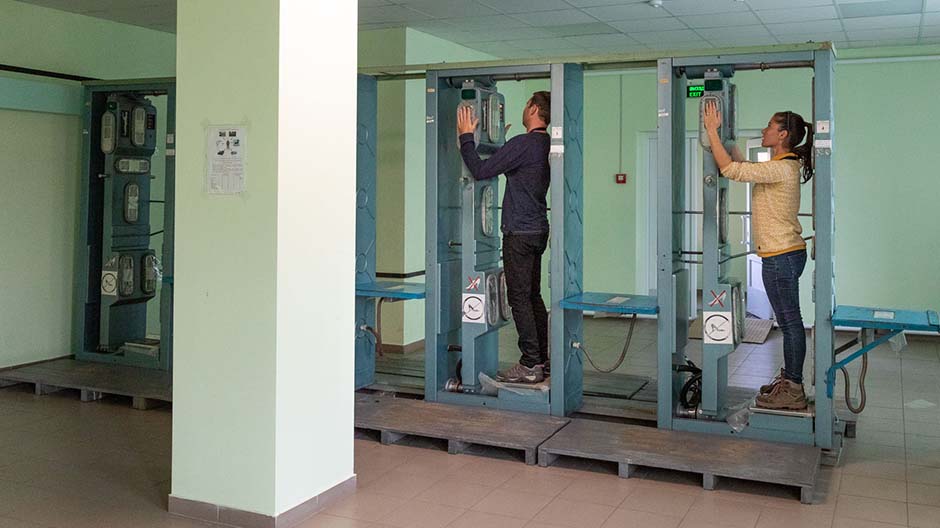
People are still working here.
To our amazement the road is brand new and so we reach Chernobyl quickly. The town is located outside the 10-kilometre-zone – the inner circle of the prohibited area. Many of the buildings have been renovated and serve as lodgings for the workers and engineers of the old Prypyat power plant. Scientists, soldiers, police officers, fire-fighters – there are in fact still a lot of people working here, although on a rota basis, so always only for a certain length of time. A good infrastructure, sunshine and autumn-coloured trees on the day of our visit: the pleasant atmosphere could easily belie the danger that this place still represents.
We see the New Safe Confinement over reactor block 4 and next to it reactor block 3 which continued to provide electricity until 2000. We are only allowed to stop and take photos in certain locations. Another checkpoint and we are in the 10-kilometre-zone, in Prypyat. The town then with a population of 50,000 was cleared very quickly. For 35 years now everything has been at a standstill and nature is recapturing Prypyat.
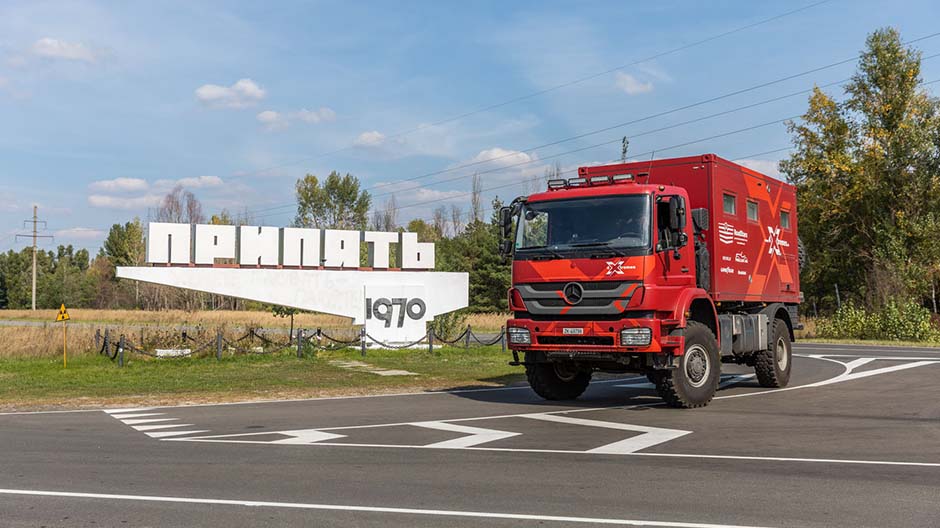
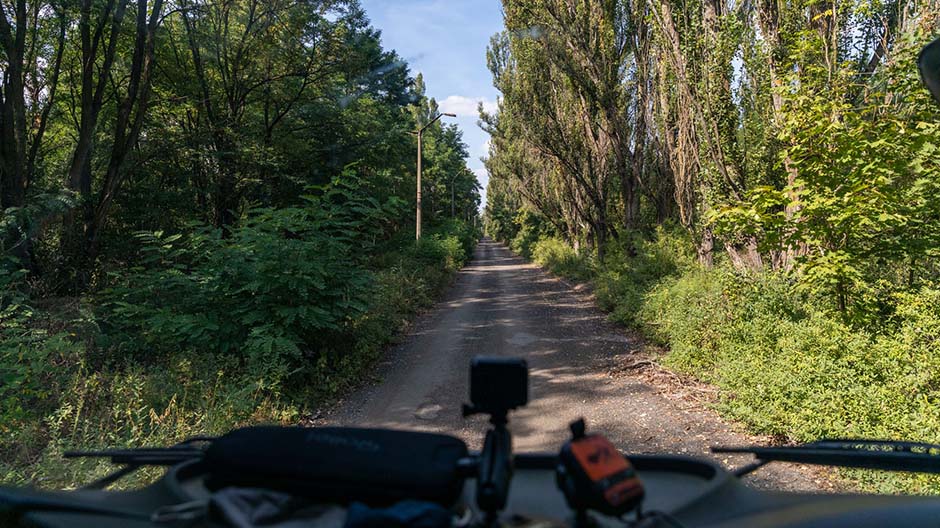
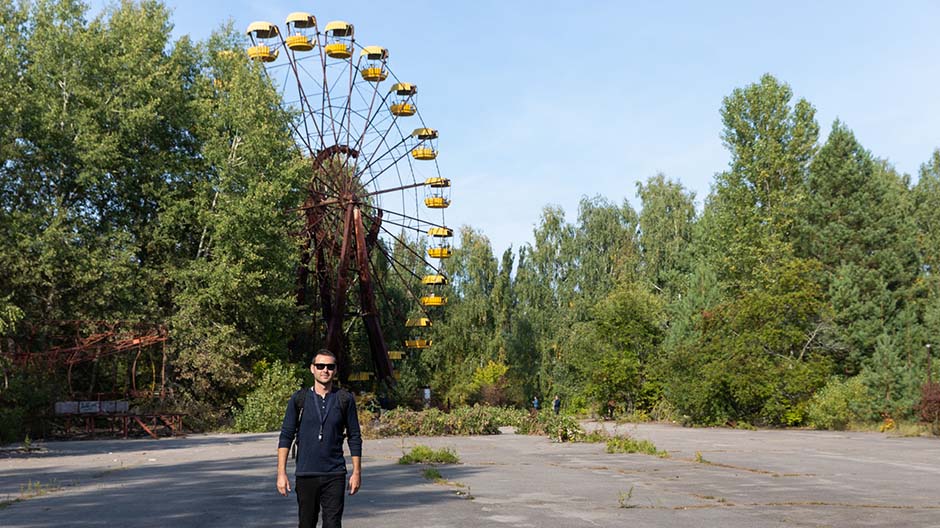
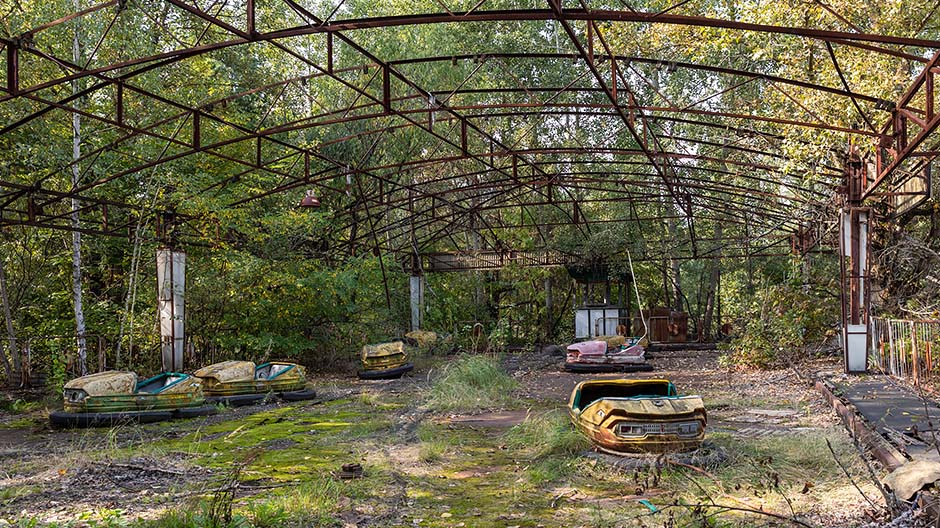
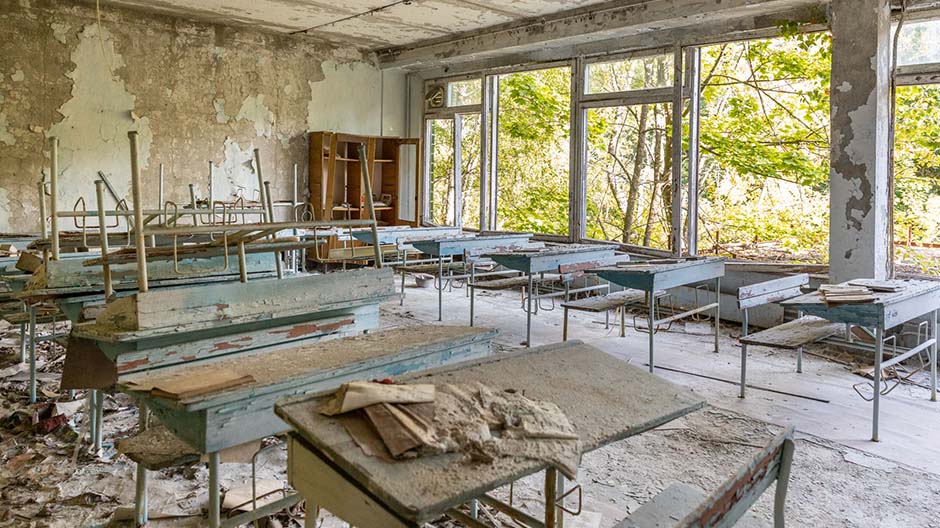

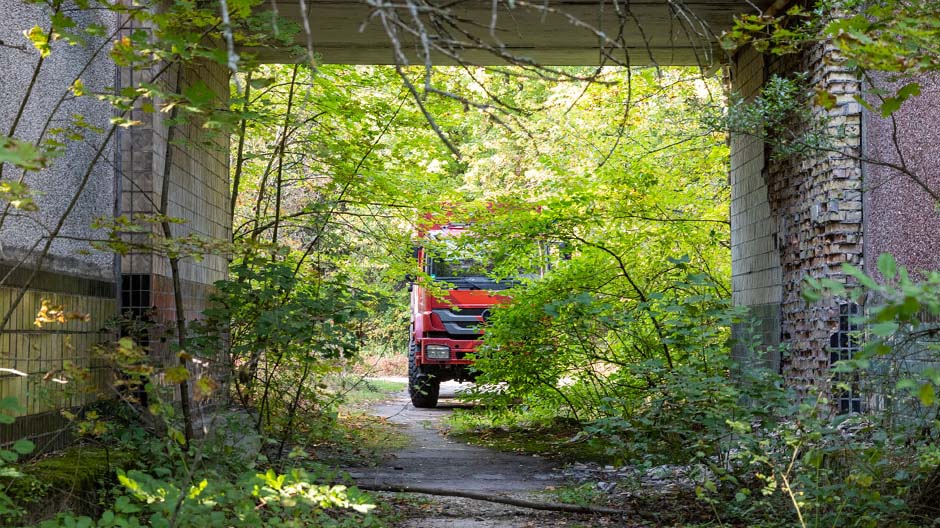
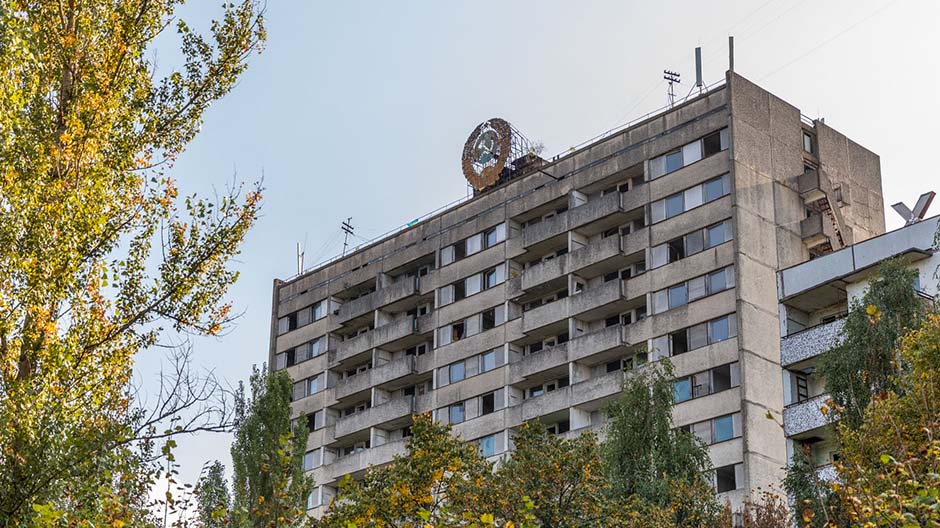
Prypyat – Sleeping Beauty for 35 years.
We drive along the main road. It was once a boulevard, but today it is overgrown and hardly recognisable. Prypyat was built less than 20 years before the catastrophe for the labour force at the plant and was considered to be relatively rich. Most of the buildings are locked. However we are allowed to explore a school, a kindergarten, a hotel and a few other buildings – even on our own.
We also go to perhaps the most well-known place in this once flourishing town: the pleasure grounds with a big wheel and dodgems. They weren't even in operation yet when Prypyat came to such a sudden end in 1986. Just before we come to the end of the tour – much too soon – we make a stop at the Duga radar system. The 150-metre receiving aerial was part of an over-the-horizon radar system which served the Soviets as a missile defence system.
Exit only after a strict inspection.
Then things get serious: before we can leave the prohibited area, we have to pass two checkpoints with full-body scanners. The Axor is also inspected for radiation. The dosimeters are sent to a lab for evaluation. If the readings are too high, you are informed and must undergo a medical examination and if necessary treatment. We are spared that. And so we continue our world tour – one memory richer; that of an oppressive but extremely exciting day.
4-Xtremes – The World Tour.
An unparalleled journey.
Andrea and Mike Kammermann have been on tour in their Axor for three years. "4-Xtremes – The World Tour" is the motto of the journey that the two Swiss nationals embarked on in mid-2020 and which they share with the RoadStars community. Keep up to date and don't miss out on any of the stunning destinations visited by the adventurous pair.
You can find the current parts from the “4-Xtremes – The World Tour” series here.
You can find the route of the trip before the crossing to South America here.
Photos: 4-Xtremes




Comment
Please log in to post a comment.
18 comments
Auch beim Lesen spürt man eine gewisse Beklemmung - und wird dabei daran erinnert, worauf es im Leben wirklich ankommt und wie schnell sich das Leben ändern kann...
Vielen Dank, daß ihr uns wieder "mitgenommen" habt! 🙏
Auch beim Lesen spürt man eine gewisse Beklemmung - und wird dabei daran erinnert, worauf es im Leben wirklich ankommt und wie schnell sich das Leben ändern kann...
Vielen Dank, daß ihr uns wieder "mitgenommen" habt! 🙏
Viele Grüsse von uns 😊
Viele Grüsse von uns 😊
Wenn man das liest ist man in Gedanken gleich wieder im Jahre 1986 als die Katastrophe passierte!!😔
Weiterhin gute Fahrt und bleibt vor allem gesund!😎🚛👍
Euer Dominik 😎🚛
Wenn man das liest ist man in Gedanken gleich wieder im Jahre 1986 als die Katastrophe passierte!!😔
Weiterhin gute Fahrt und bleibt vor allem gesund!😎🚛👍
Euer Dominik 😎🚛
Viele Grüsse von uns 😊
Viele Grüsse von uns 😊
Bin auch stets für Action u. Abenteuer zu haben, aber diesen "Nervenkitzel" mit der unsichtbaren radioaktiven Strahlung (mit immer noch vielen unbekannten Auswirkungen) bräuchte ich trotz Dosimetern u. vermeintlichen Sicherheitsvorkehrungen nicht unbedingt 😉 ... aber Jedem* nach seiner Facón 😃
Bin auch stets für Action u. Abenteuer zu haben, aber diesen "Nervenkitzel" mit der unsichtbaren radioaktiven Strahlung (mit immer noch vielen unbekannten Auswirkungen) bräuchte ich trotz Dosimetern u. vermeintlichen Sicherheitsvorkehrungen nicht unbedingt 😉 ... aber Jedem* nach seiner Facón 😃
Spass bei Seite, klar gibt es noch gesperrte und hoch gefährliche Orte in der Zone wo ganz klar off-limits sind.
Spass bei Seite, klar gibt es noch gesperrte und hoch gefährliche Orte in der Zone wo ganz klar off-limits sind.
Eine interessante Story und tolle Fotos!!! 👍👍👍👍👍⛟😎🤘
Eine interessante Story und tolle Fotos!!! 👍👍👍👍👍⛟😎🤘